12 Top Tourist Attractions in Nepal
Nepal is truly unique. This small, mountainous nation has an astounding array of tourist attractions for nature lovers, history buffs and spiritual seekers alike. Nepal is home to the Himalayan mountain range, which is a trekker’s and outdoorsman’s paradise. Among this range is the world’s most famous mountain: Mount Everest. Stretching to 8,848 meters above sea level it is the world’s highest mountain.
Small, remote towns are scattered throughout the country, many of which will transport you back in time through the centuries to kingdoms of yesteryear. Among these towns are religious monuments that have been erected as holy sites of pilgrimages. The following tourist attractions in Nepal are famous for a reason; they showcase the best Nepal has to offer and are just begging to be explored.
12. Pashupatinath Temple
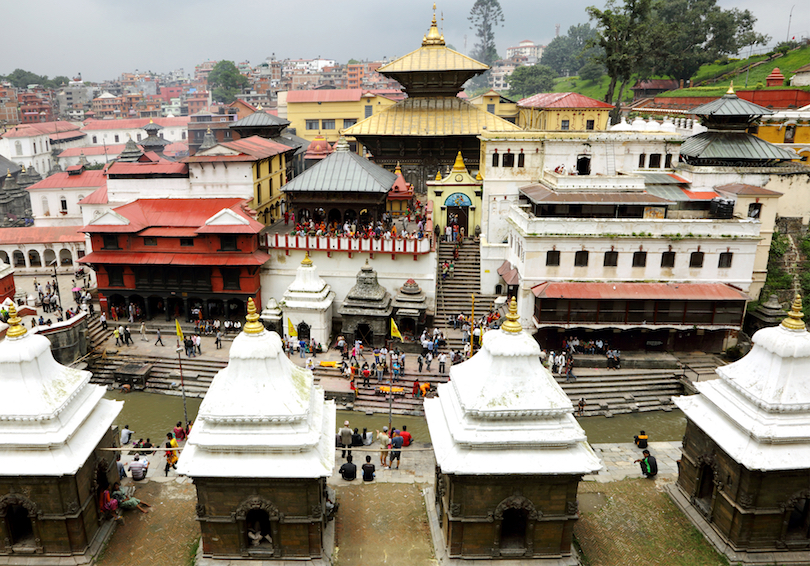
On the bank of the Bagmasti River sits the most sacred Hindu temple in Nepal: the Pashupatinath Temple. It is considered to be one of the most valuable religious sites in Asia, and is more like a complex than a temple. Consisting of several libraries, temples, courtyards, monuments and shrines, the site is a popular place for cremations.
This is due to the fact that it sits on the riverbank, and the temple is dedicated to Lord Shiva. Often shocking for visitors, this practice has been taking place in the same location and other places throughout South Asia for thousands of years.
11. Sagarmatha National Park
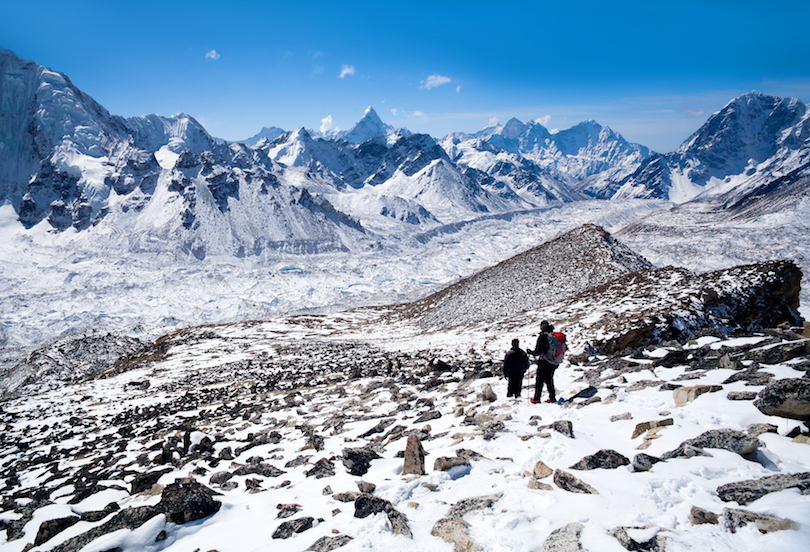
Sagarmatha National Park is home to the world’s highest mountains, including Mount Everest. However, there is much more to this park of mountain behemoths than the astounding natural landscape. The mountain ranges are home to some of the world’s rarest and more impressive species: the elusive snow leopard, the red panda, and Himalayan black bear.
There are hundreds of birds who stay within the park, and many musk deer who run wild throughout it. The local people: the Sherpas, have villages here and regularly worship at the holy sites scattered around the park. However, visitors should be wary of the high elevation and take the proper steps towards preventing altitude sickness.
10. Namche Bazaar
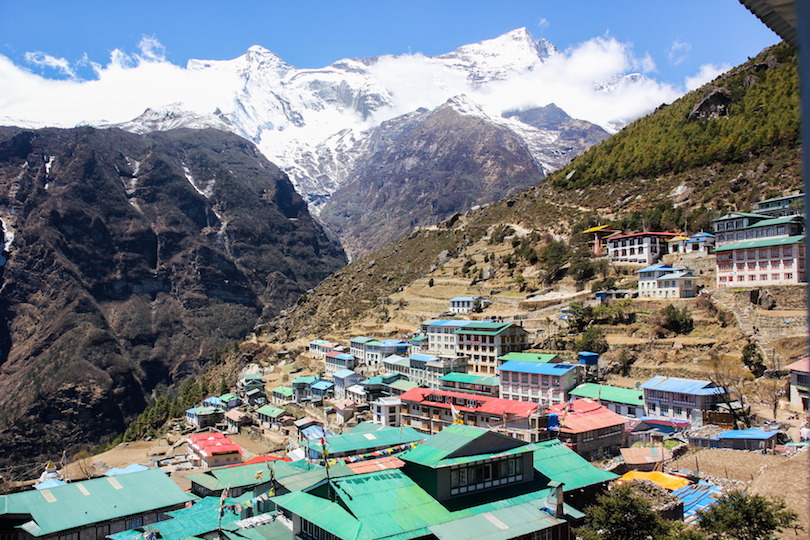
Namche is often called the gateway to Everest because it is where most people start their trek to the world’s tallest mountain. However, the bazaar in Namche has been a trading center for thousands of years and is famous for its local yak butter and cheese.
Today, the bazaar offers everything one might need for a trek through the Himalayas, or for daily life in the village. As you might expect, the Namche Bazaar is the highest bazaar in the world. For most people, it is a challenge simply to make it to Namche!
9. Ancient Town of Patan
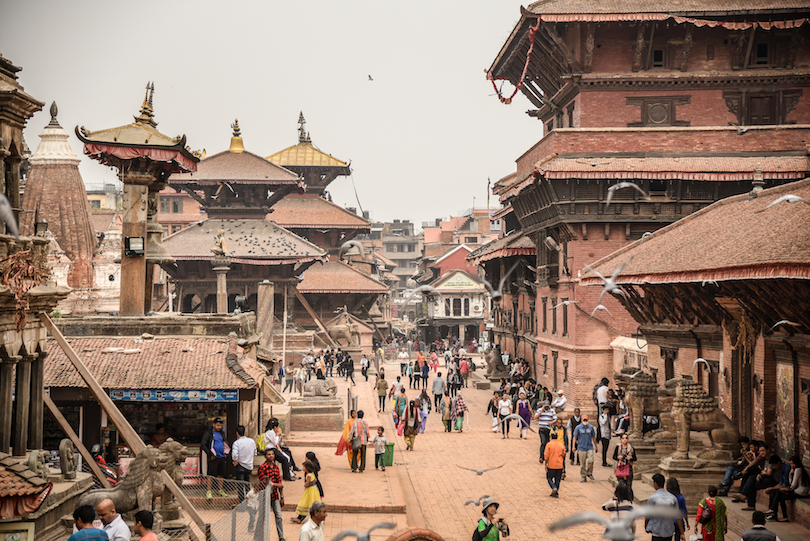
Patan is only separated from Kathmandu by the cloudy Bagmati River. It is often still called by its traditional Sanskrit name, which means ‘City of Beauty.’ The ancient part of the city is known for having some the best examples of traditional architecture and Newari artistry in all of Nepal.
The most popular attractions in town include the Golden Temple, Mul Chowk, Patan Museum, Krishna Mandri, and Sundari Chowk. All the sights are concentrated in the old part of the city and showcase the history of this stunning little town.
8. Bhote Koshi
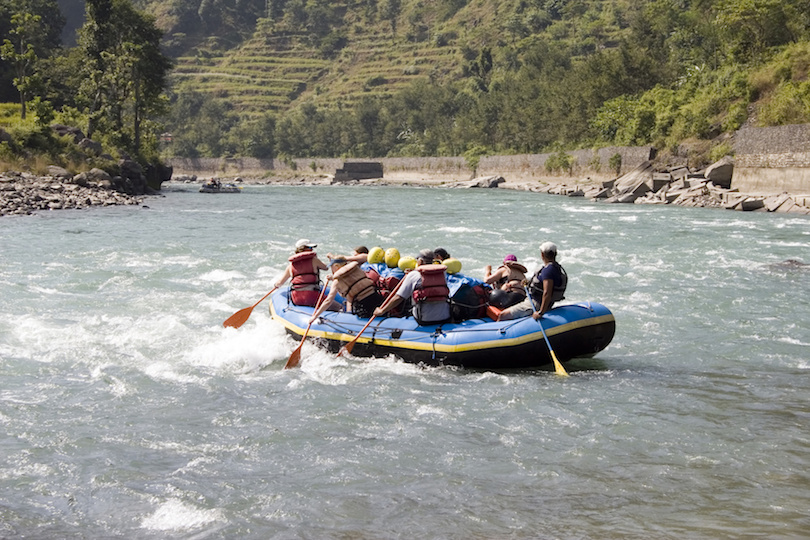
The Bhote Koshi is the upper river course of the Sun Kosi river, that originates in Tibet. Calling all adrenaline junkies; Bhote Koshi River rafting is perfect for individuals who are looking to take a break from sightseeing and trekking in Nepal, and indulge in some heart pounding adventure.
Bhote Koshi offers the steepest river rafting in all Nepal. It is located just a few hours north-west of Kathmandu near the Nepalese and Tibetan border, nestled between mountain ranges. The glacier fed river offers Level 5 rapids at its height, but if that’s not enough action, there is also an exciting bungee jump located dauntingly high above the river.
It is the highest free fall in the world. Despite the nature of the sport, the bungee is very safe; it was designed by the Kiwis behind the famous Queenstown bungee jump in New Zealand.
7. Durbar Square, Kathmandu
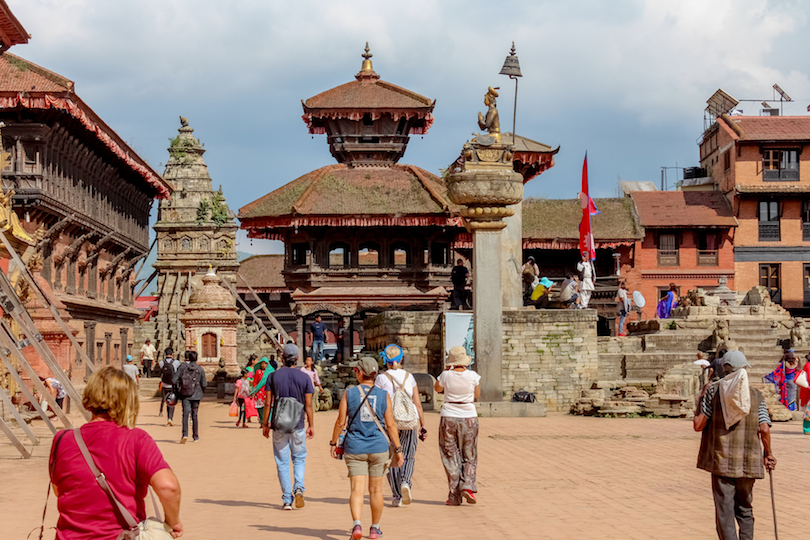
Durbar means royal palace in Nepalese, and that’s exactly what Durbar Square is. The palace square sits in front of the former imperial palace of the bygone Kathmandu Kingdom. Before Nepal was unified in the mid 18th century, the nation consisted of many smaller kingdoms, including the one at Kathmandu.
It was in these Durbar Squares around the country that kings were crowned and royal proclamations were made. Durbar Square in Kathmandu is especially impressive; it showcases some of the country’s best traditional architecture and Newari-style artistry.
Aside from the palace, there are many temples, towers, a former elephant stable, and shrines surrounding the square. Unfortunately, many of the structures were badly damaged in the 2015 earthquake, but restoration efforts are already underway to restore them back to their former glory.
6. Phewa Lake
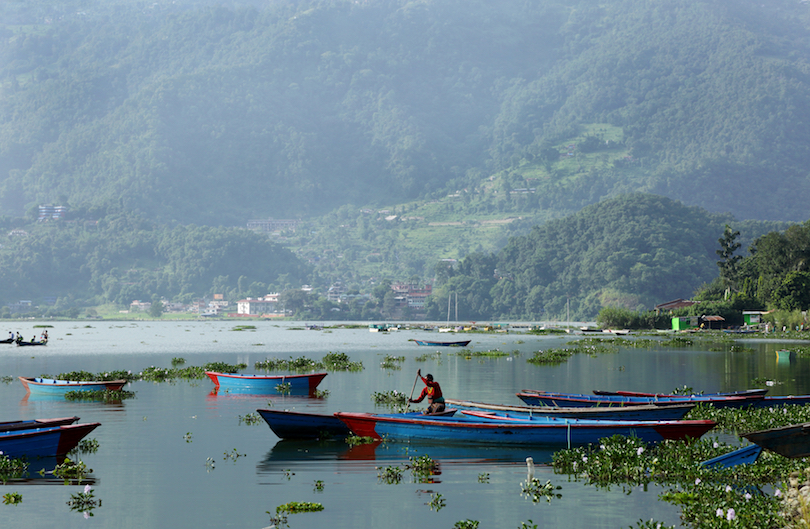
This gorgeous freshwater lake near Pokhara is the second largest in Nepal and reflects the impressive Annapurna mountain range in its waters. Most hotels and restaurants sit on the opposite side of the lake from the mountain range, and thus offer lovely views.
For most of the year, snow-capped mountains are the norm. The other side of the lake is too dense with forests and steep hills to be developed. In the center of the lake sits the holy temple of the Goddess Durga. Named the Tal Barahi Temple; this pagoda can only be reached by boat and is very popular with visitors and pilgrims alike.
Otherwise, water activities are popular on the lake. There are various treks and smaller hikes around the lake that offer stunning natural surroundings and views of the lake and mountains.
5. Durbar Square, Bhaktapur
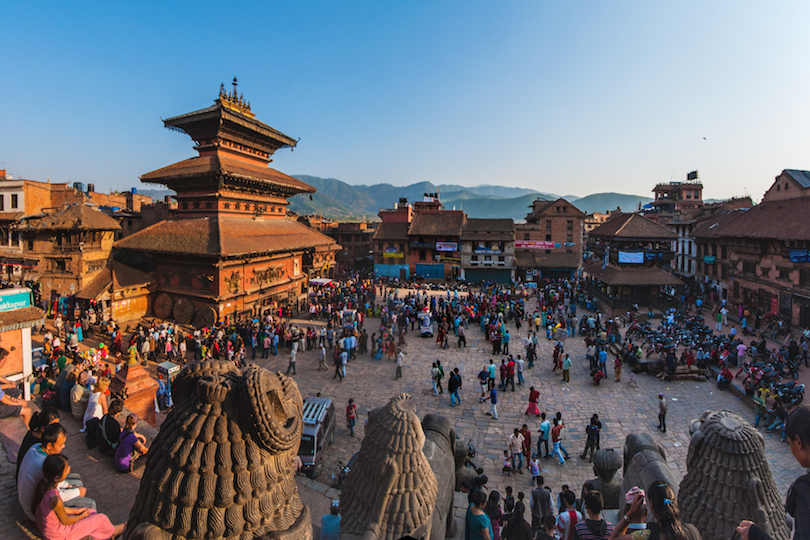
The royal square in Bhaktapur will transport you back 1000’s of years. It offers a quieter alternative to Durbar Square in Kathmandu, as there are less crowds and souvenir stalls. The small shops surrounding the square seem not to completely rely on tourism, but are willing to demonstrate how they produce their local handicrafts; including carvings and clay ceramics.
There are outstanding examples of intricate wooden or stone carvings throughout the square and its many ancient buildings and temples. Entry to Bhaktapur’s Durbar Square is completely free of charge, however, an entry fee may be charged for some of the historical landmarks and attractions encircling the square. These attractions include the 55 Window Palace, Golden Gate, Lion Gate, and the Mini Pashupathi Temple.
4. Chitwan National Park
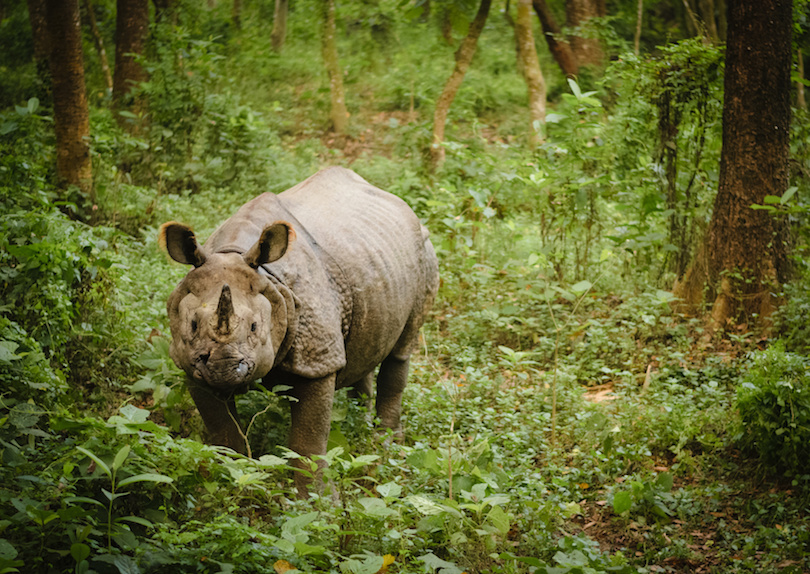
Chitwan National Park is famously home to some of the world’s last remaining populations of one-horned rhinos. But impressively, that is not the only iconic animal this national park protects; there are frequent sightings of the famous Bengal tiger in this area.
On top of this, Gharial crocodiles patrol the waters, with sloth bears and leopards roaming the jungles and woodlands. These animals have given the park its nickname: ‘the second Serengeti,’ for its wildlife viewing opportunities.
The landscape here is incredibly lush and made up of wide grasslands, dense jungles, and high mountain ranges. Safaris are a popular way to see the park, and even overnight tours can be arranged.
3. Annapurna Sanctuary Trek
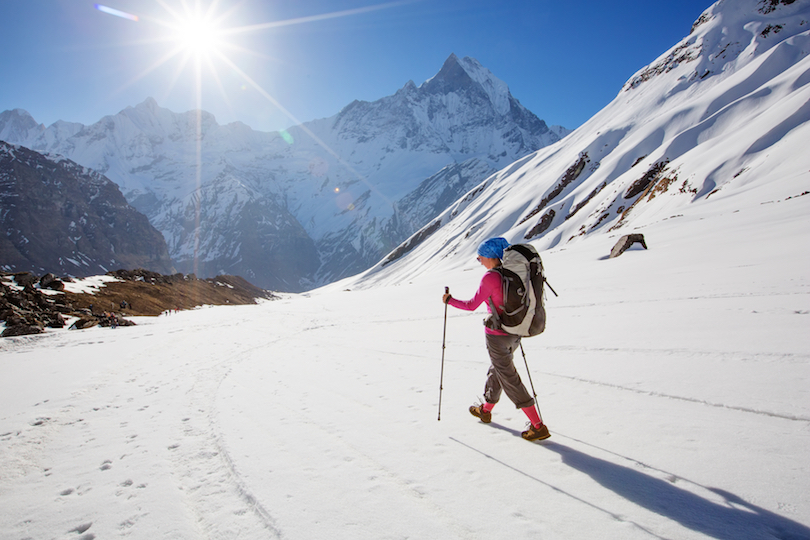
The elusive Annapurna Sanctuary can only be reached via a 10 to 15-day trek. It sits on a high glacial basin and is encircled by surrounding mountains. However, for this attraction, it’s more about the journey than the destination.
The Annapurna Sanctuary is reached mid-trip, but the entirety of the trek offers incredible views of the surrounding Himalayan mountain range. Trekkers stay at homestays along the route, often dining with local families.
This is one of the few hikes that does not require a guide, as the trails are very well marked and dotted with villages. The Sanctuary is held sacred by the local people, so visitors should behave accordingly when visiting.
2. Boudhanath Stupa
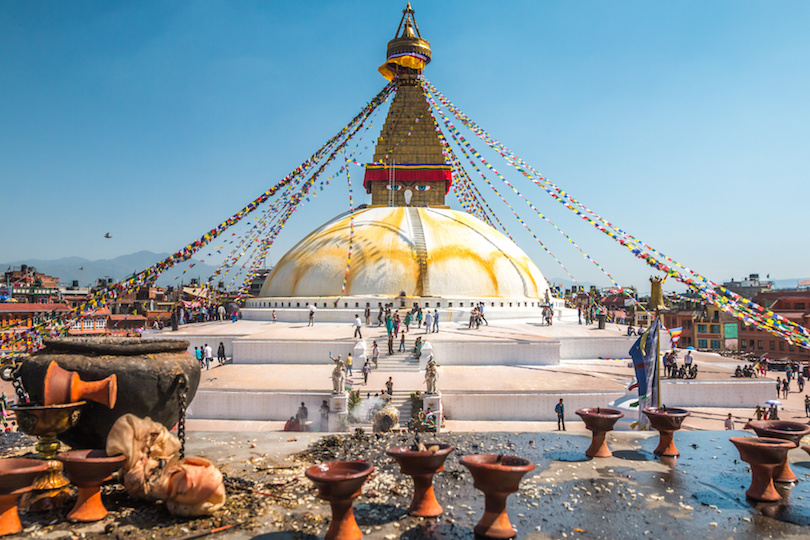
Located just outside the big city of Kathmandu is Boudhanath Stupa. The stupa provides stunning views of Kathmandu and the valley surrounding it. One of the largest Buddhist stupas in the world, it was probably created in the 14th century after the Mughal invasions. Hundreds of colorful prayer flags flutter in the wind around the stark white and gold monument.
At the base of the Stupa are four pairs of eyes, which represent Buddha’s all-seeing, all-knowing nature. A large number of Tibetan Buddhists reside around the Stupa, many of whom fled as refugees from their home country.
1. Everest Base Camp
Sitting at the top of the world, Mount Everest is a stunning reminder of our tiny role on this planet. At the base of Everest, Sherpas and mountaineers work overtime to prepare for their trip to the summit.
Holy sites are worshiped at, and puja’s (religious ceremonies) take place in April and May to ensure safe travels. Visitors are welcome to visit Everest Base Camp and soak up the organized chaos of a trip that doesn’t always promise a happy ending. Helicopter trips are a popular way to visit base camp, as is the ‘Everest Base Camp Trek’ that has become increasingly popular in recent years.
This arduous trek can take up to three weeks simply to reach the base, and gives participants a small glimpse of the laborious task mountaineers might experience when climbing Everest.
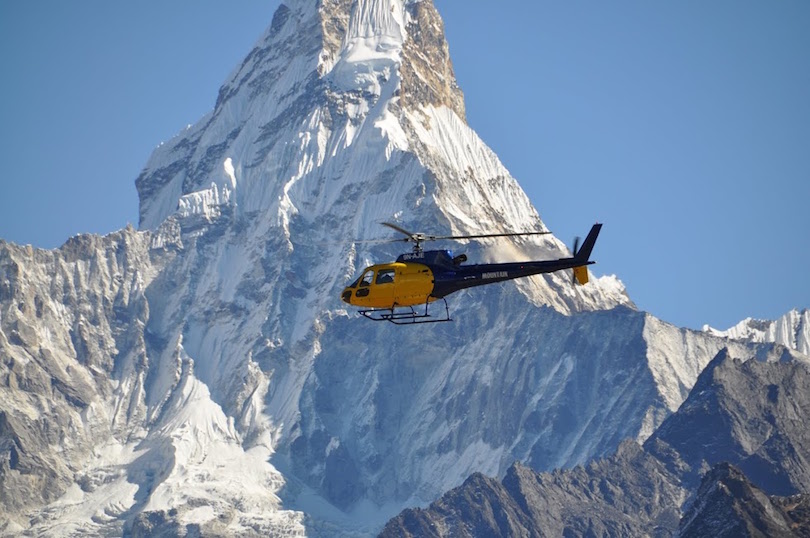
Comments
Post a Comment